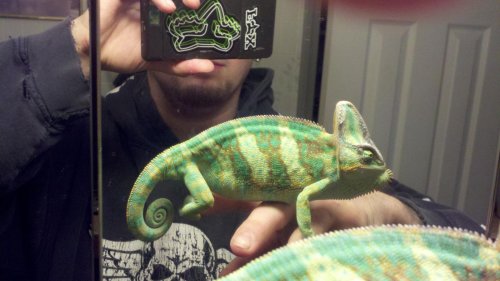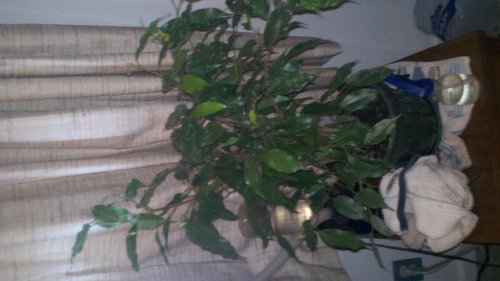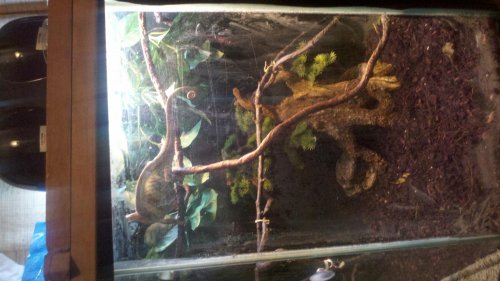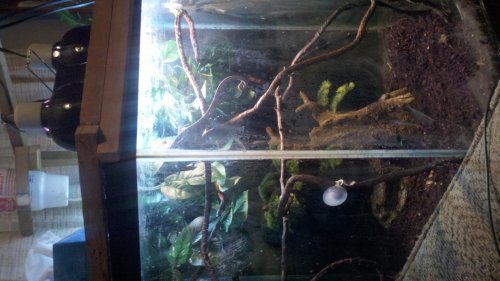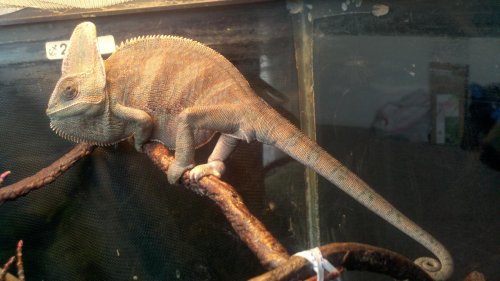Erik88
New Member
Hello I have a male veiled chameleon his names Kronos. Im trying to find out bout how old he is n a couple of other problems hear lately . I got him from petsmart when he was 4 inchs long around the beginning of november 2011 n he's a foot now. And the problems here lately are he's had this white crust around his nose that's kinda thick he has the usual white deposits out his nose like normal from over supplement but this diff from that it builds up round each nose hole its not wet its all dry and flakes rite off Idk if its the same thing or not. The other thing is he was a darkish green until his last shed bout 2 to 3 weeks ago n now he has a yellow stripes on his side anyways he's usually green w yellow in his cage n I've changed his bedding on the bottom of his cage b4 n nothing ever bothered him n I changed it 2 days ago n now he's been a dark brown like the color of his vines he sits on n as soon as I pick him up he turns green or yellow or if he climbs out of his cage n watches outside he turns green n yellow just its here sudden now he's turning brown. N tonight he started sitting up right in his cage w his head pointed up is that normal? He don't have extra mucas n don't wheeze n he's active so id appreciate your help thx

